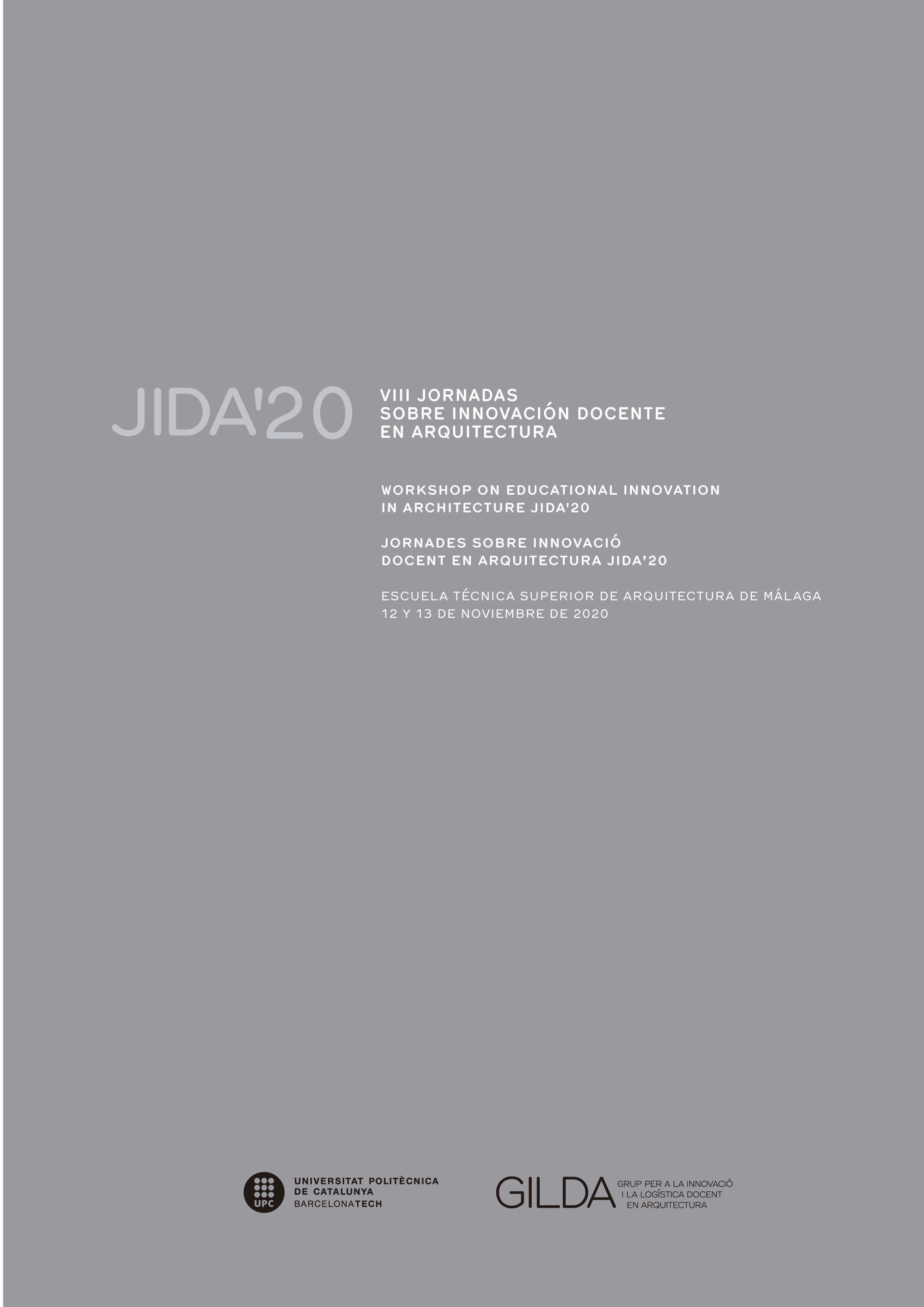Feedback Formation. Three teaching projects on robotically manipulated granular materials
DOI:
https://doi.org/10.5821/jida.2020.9312Abstract
This chapter presents three different case studies on robotic fabrication as dynamic design processes, exploring the relationship between computational design, digital fabrication, and complex material systems in different teaching formats at the Department of Architecture at ETH Zurich. All projects explore the control of material formations through digital tools, creating an educational environment that allows the designer to directly interact with and develop an intuitive understanding of the material processes at hand, and suggesting a novel approach linking digital control with reversible construction techniques.
References
Digital references
AEJMELAEUS-LINDSTRÖM, P., RUSENOVA, G., MIRJAN, A., MEDINA, J., GRAMAZIO F., & KOHLER, M. (2020), Rock Print Pavilion: Robotically fabricating architecture from rock and string. Constr Robot 4, 97–113 < https://doi.org/10.1007/s41693-020-00027-8>
HURKXKENS, I., BERNHARD, M. (2019). Computational Terrain Modeling with Distance Functions for Large Scale Landscape Design. In: Buhmann, E., Ervin, S., Helh-Lange, S., Palmer, J. (Eds.), Journal of Digital Landscape Architecture, 4-2019, Wichmann Verlag, Berlin. <https://gispoint.de/fileadmin/user_upload/paper_gis_open/DLA_2019/537663024.pdf>
JUD, D., HOTTIGER, G., LEEMANN, P. & HUTTER, M. (2017), Planning and control for Autonomous Excavation. IEEE Robotics and Automation Letters, 4 (2), 2151-2158. <https://www.research-collection.ethz.ch/handle/20.500.11850/172404>
Web page
THE DIGITAL IN ARCHITECTURE. Online platform for course teaching materials (ITA Elective). <https://gramaziokohler.github.io/teaching_materials/> [Consult: August 4th 2020]
ROBOTIC LANDSCAPES III - DESIGN STUDIO HS2019. Chair of Landscape Architecture, ETHZ. <https://girot.arch.ethz.ch/courses/design-studios/design-studio-hs2019-robotic-landscapes-iii-2> [Consult: August 6th 2020]
ITA ELECTIVE COURSE - THE DIGITAL IN ARCHITECTURE II. Gramazio Kohler Research, ETHZ. <https://gramaziokohler.arch.ethz.ch/web/e/lehre/401.html> [Consult: August 6th 2020]
Videos
GRAMAZIO KOHLER RESEARCH. Vimeo <https://vimeo.com/user14316338> [Consult: August 4th 2020]
ROBOTIC LANDSCAPES III (Simulation). Chair of Landscape Architecture. Vimeo < https://vimeo.com/387934699> [Consult: August 4th 2020]
ROBOTIC LANDSCAPES III (Student work). Chair of Landscape Architecture. Vimeo < https://vimeo.com/387930860> [Consult: August 4th 2020]






















